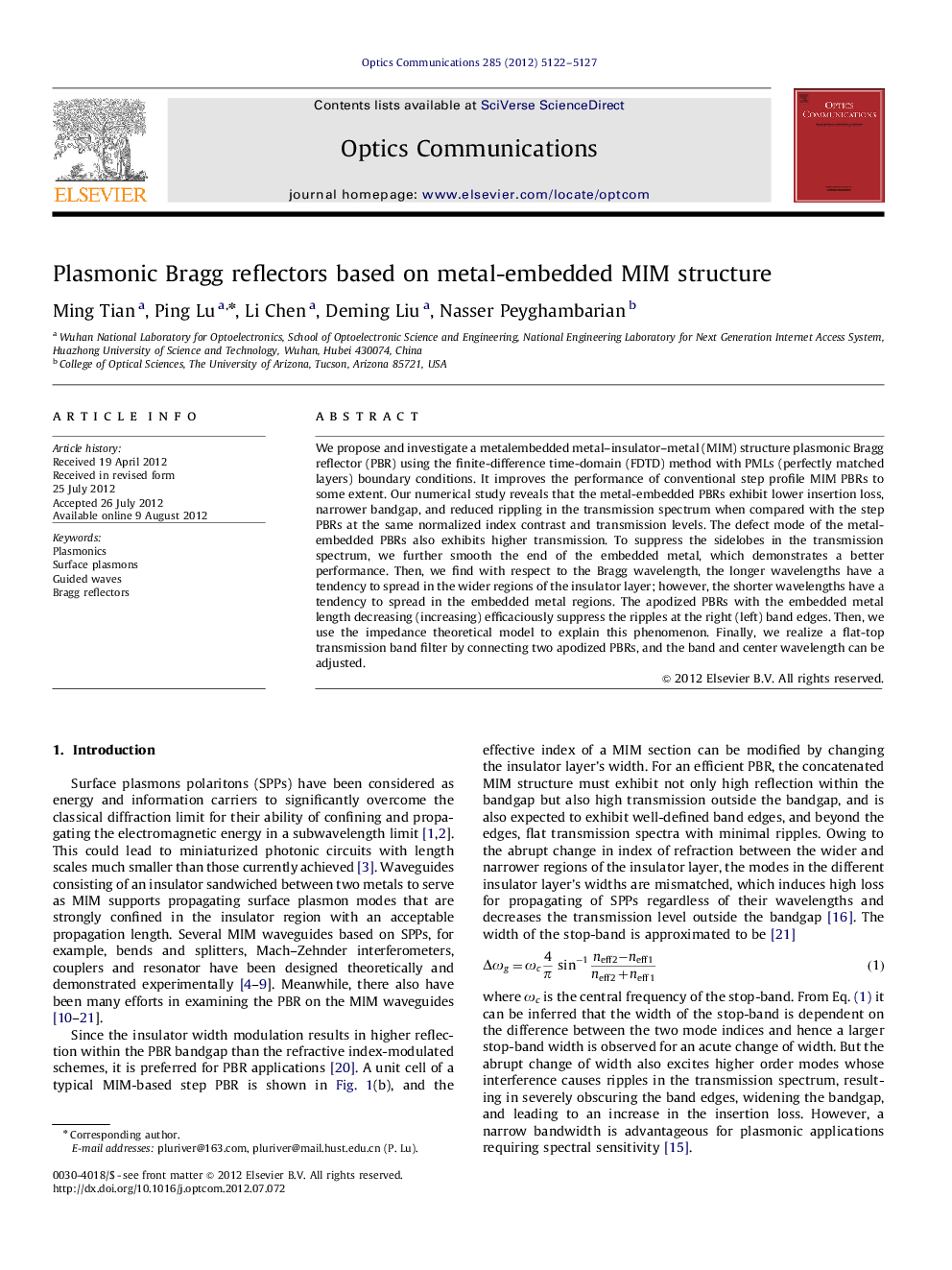| Article ID | Journal | Published Year | Pages | File Type |
|---|---|---|---|---|
| 1536509 | Optics Communications | 2012 | 6 Pages |
We propose and investigate a metalembedded metal–insulator–metal (MIM) structure plasmonic Bragg reflector (PBR) using the finite-difference time-domain (FDTD) method with PMLs (perfectly matched layers) boundary conditions. It improves the performance of conventional step profile MIM PBRs to some extent. Our numerical study reveals that the metal-embedded PBRs exhibit lower insertion loss, narrower bandgap, and reduced rippling in the transmission spectrum when compared with the step PBRs at the same normalized index contrast and transmission levels. The defect mode of the metal-embedded PBRs also exhibits higher transmission. To suppress the sidelobes in the transmission spectrum, we further smooth the end of the embedded metal, which demonstrates a better performance. Then, we find with respect to the Bragg wavelength, the longer wavelengths have a tendency to spread in the wider regions of the insulator layer; however, the shorter wavelengths have a tendency to spread in the embedded metal regions. The apodized PBRs with the embedded metal length decreasing (increasing) efficaciously suppress the ripples at the right (left) band edges. Then, we use the impedance theoretical model to explain this phenomenon. Finally, we realize a flat-top transmission band filter by connecting two apodized PBRs, and the band and center wavelength can be adjusted.
